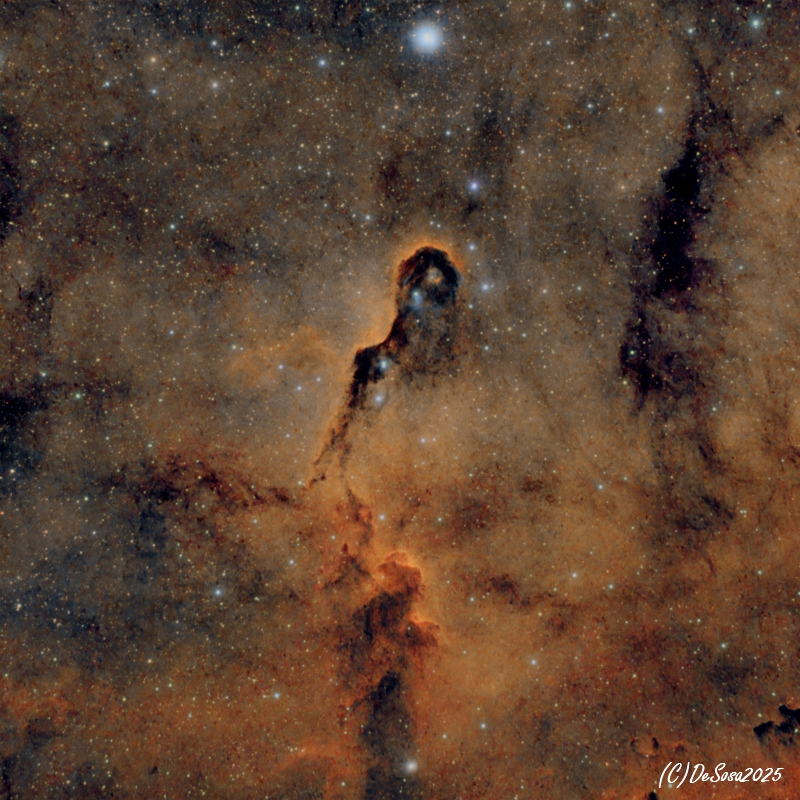The Elephant's Trunk nebula is a concentration of interstellar gas and dust and ionized gas region located in the constellation Cepheus about 2,400 light years away from Earth. The piece of the nebula shown here is the dark, dense globule IC 1396A; it is commonly called the Elephant Trunk nebula because of its appearance at visible wavelengths, where it is a dark patch with a bright, sinuous rim. The bright rim is the surface of the dense cloud that is being illuminated and ionized by a very bright, massive star that is just to the west of IC 1396A. The entire IC 1396 region is ionized by the massive star, except for dense globules that can protect themselves from the star's harsh ultraviolet rays.
The Elephant Trunk nebula is now thought to be site of star formation, containing several very young (less than 100,000 yr) stars that were discovered in infrared images in 2003. Two older stars are present in a small, circular cavity in the head of the globule. Winds from these young stars may have emptied the cavity.
The combined action of the light from the massive star ionizing and compressing the rim of the cloud, and the wind from the young stars shifting gas from the center outward lead to very high compression in the Elephant Trunk nebula. This pressure has triggered the current generation of protostars.
 La nebulosa de la Trompa del Elefante es una concentración de gas, polvo y gas ionizado interestelar situada en la constelación de Cefeo unos 2.400 años luz de distancia de la Tierra. La fracción de la nebulosa que se muestra aquí es la oscura y densa IC1396A; lo que comúnmente se llama la nebulosa Trompa de Elefante, debido a su apariencia en longitudes de onda visibles, donde se observa una mancha oscura con un borde brillante y sinuoso. El borde brillante es la superficie de la densa nube que se está iluminado y ionizada por una muy brillante estrella masiva que está justo al oeste de IC1396A. Toda la región IC1396 está ionizado por esa estrella masiva, con excepción de los glóbulos densos que quedan protegidos de los rayos ultravioleta de la estrella.
La nebulosa Trompa de Elefante se piensa ahora que es un lugar de formación de estrellas, que contiene varias estrellas muy jóvenes (menos de 100.000 años) que fueron descubiertas en imágenes infrarrojas en el año 2003. Dos estrellas más viejas se encuentran en una pequeña cavidad circular en la cabeza del glóbulo. Los vientos solares de estas estrellas jóvenes pueden haber vaciado de la cavidad.
La acción combinada de la luz de la estrella masiva ioniza y comprime el borde de la nube, y el viento de las estrellas jóvenes expulsando el gas de zona central hacia el exterior, se traduce en una elevada compresión sobre la nebulosa. Esta presión ha disparado la actual generación de protoestrellas. |
|

